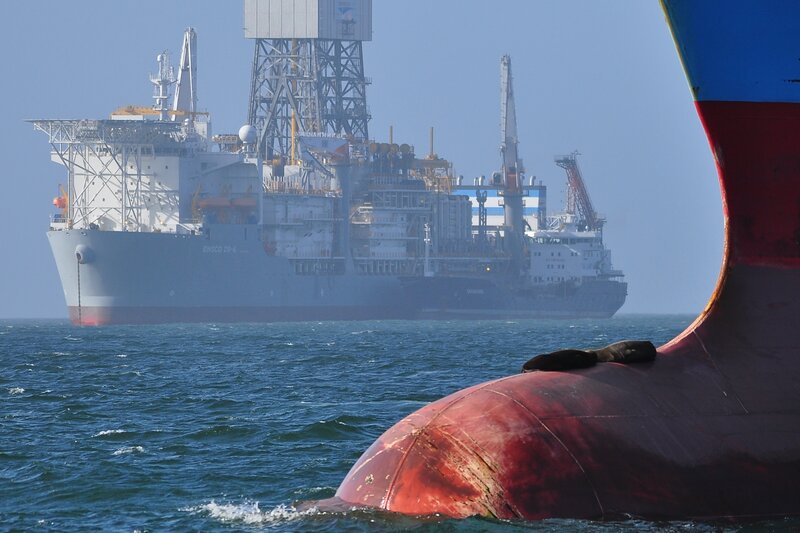Awakening sleeping dragons

[Ensco DS6, Epeus archive]
As drilling contractors look to awaken their deep-sea drilling monsters, can they learn a lesson from The Hobbit?
Oil and gas are back in demand. After the 2014 price crash, utilization of offshore drilling rigs tumbled to around 57% of the total available fleet. Rigs were scrapped and many ‘stacked’, preserved in a state of hibernation for more than half a decade. But now, as oil prices hit new highs, offshore drilling rig reactivation is back on the agenda of field operators and drilling contractors alike.
With the economics in their favour again, field operators want to get cracking with exploration or production campaigns, while financially weakened drilling contractors desperately need to get back to steady revenues. To meet an operator’s overall campaign schedule, both parties need the rigs ready to operate safely and efficiently from the get-go.
With 43% of the available fleet sitting idle, it should be a buyer’s market for rigs, which puts the heat on the drilling contractors. However, winning work in a competitive market isn’t all about the lowest day-rate. In a volatile and cyclical oil-price regime, time is a major driver.
Demands of ‘When will it be ready?’ or ‘We really need it by…’ put pressure on the drilling contractors to commit to a drill-ready date early, even before all scope-of-work data is available and analyzed. Recent reactivation benchmark data is thin on the ground, especially for long-stacked units, since rigs haven’t been reactivated on a scale that would provide reliable rule-of-thumb data. Historically, though, reactivation estimates have been overly optimistic.
The perils of overconfidence
Tolkien fans will remember Smaug, the wily old dragon who wakes from a long slumber, ready to terrorize Middle-earth again. His overconfidence leaves him exposed, thanks to a crucial area of vulnerability that causes his downfall. Three main reasons explain why reactivation projects are also subject to vulnerability.
Start with uncertainty. Too little is known about the scope and the level of degradation of equipment and systems caused by a long out-of-service period. Success means equipment and systems, rig operations personnel, and the drilling operations processes all need to be working harmoniously right at the point of starting operations.
Second, when faced with such a challenge, the project team may be tempted to defer to the attending classification society surveyor and/or the field operator’s rig inspectors to provide a list of requirements or spot defective equipment. Letting others dictate the scope and pace is risky, as scope requirements are only fully revealed as you go, making the team’s approach reactive rather than planned and controlled.
Finally, the severe and prolonged downturn has seen the loss of capability and competence throughout this sector of upstream oil and gas. Without acknowledging these ravages, optimism bias creeps into estimates, fuelling overconfidence in one’s own team’s abilities.

[Dragon, SarahRichterArt, on pixabay.com]
Gaining the treasure
Drilling contractors report earnings quarterly, forecasting those earnings to the stock market in advance. If a project overruns, the contractor not only takes a hit from lost earnings and increased mobilization costs, their share price is often also detrimentally affected. These risks make reactivations like trying to get the treasure without waking the dragon.
On a rig restart, project teams typically inherit a budget and schedule with a delivery date based on incomplete information. Scope creep and delays create a breeding ground for ‘heroic endeavour’, where increasing demand on resources results in a daily firefight just to maintain slow progress.
This approach might get one reactivation project over the line, but the teams will run out of steam if it becomes the norm. Overconfidence when estimating cost and time—and not recognizing and properly dealing with areas of vulnerability—increase the likelihood of the project succumbing to the same fate as Tolkien’s Smaug. For too many, unfortunately, the fatal arrow in the belly is more or less self-inflicted after an unmitigated risk rears its head.
Where’s the happy ending?
We devised a rig start/intake plan that can meet both the field operator’s and drilling contractor’s needs. The off-the-shelf outline, born of numerous rig-start campaigns, allows you to map the territory quickly. We then populate it with the specific needs of the project, identifying known risks that are likely to materialize. This plan enables the drilling operator to demonstrate to the field operator that all bases have been covered, including theirs.
Rather than a culture that simply hands over responsibility to the other side, all parties are now involved and aligned to the same goal, creating a much more joined-up approach. Which you need because, ultimately, not having a rig ready when promised hurts everyone involved. With our mapping tools and experience, you can have a plan to get ‘drill ready’ before you can say ‘Bilbo Baggins’.
________________________________
Can we help you?
Our Foresight and Oversight services are designed to help you deliver project success, even if the process is sometimes uncomfortable.
For a clearer view on your project’s challenge level and your team’s capability, try our self-appraisal software: Project Horizons
________________________________


